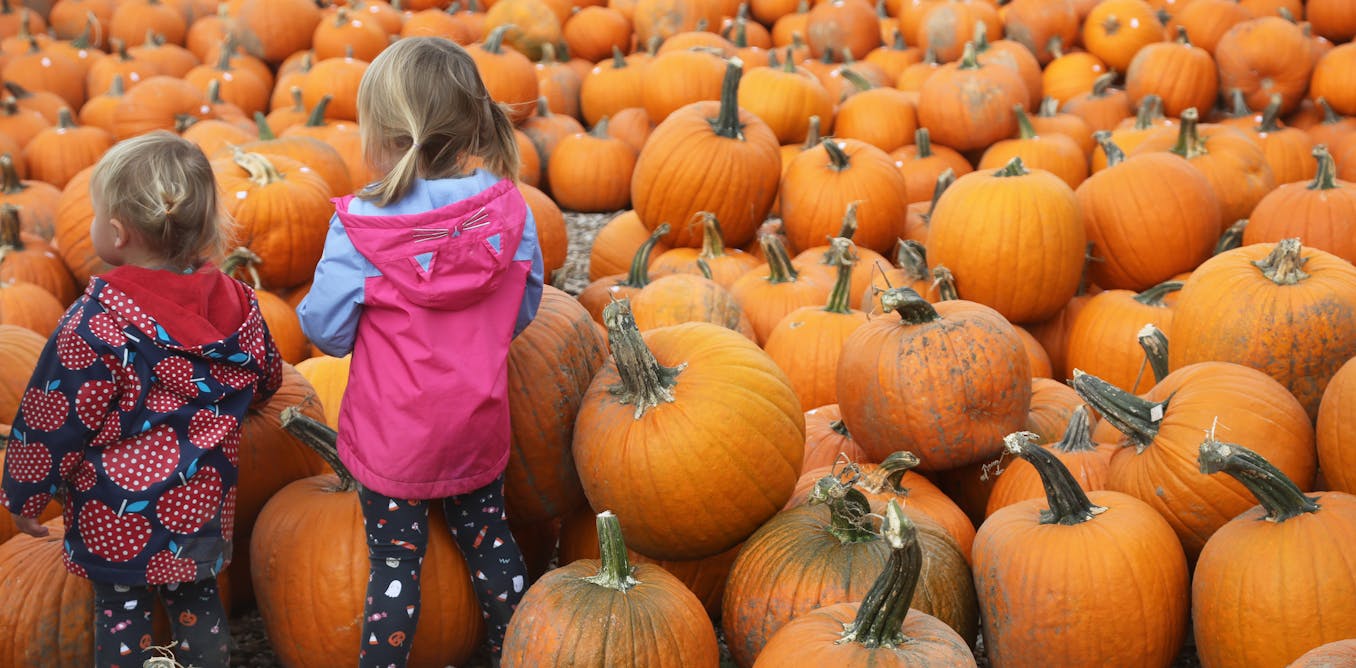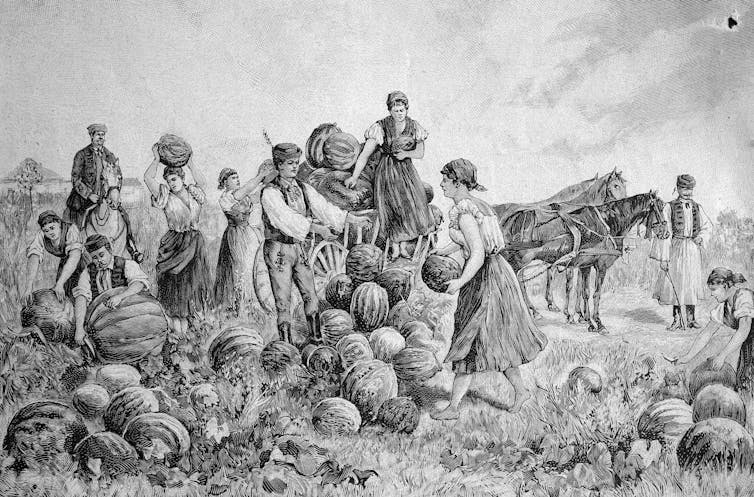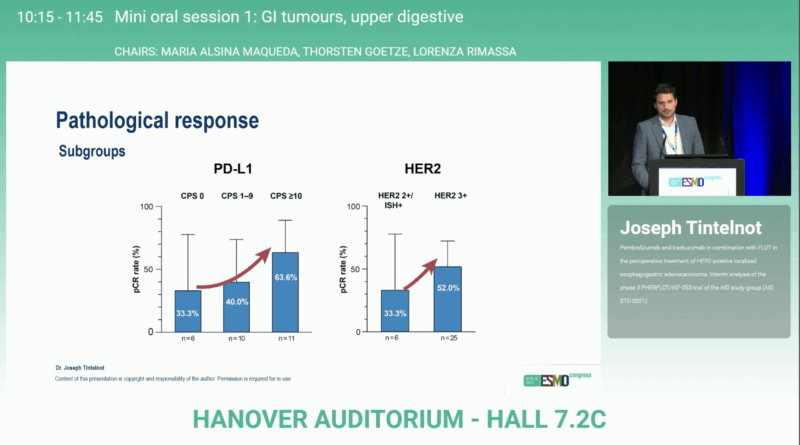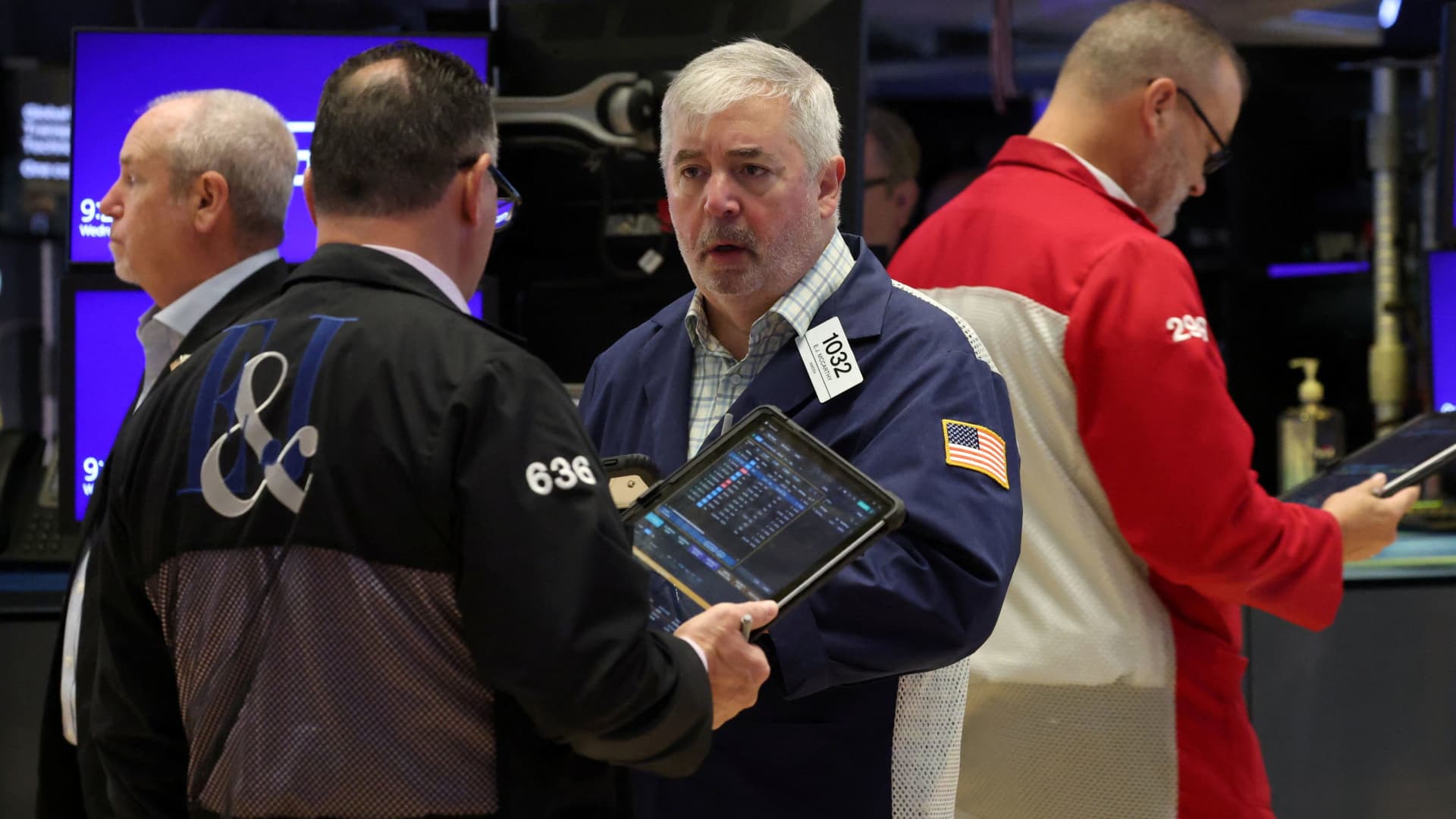- Insights Into Planet Formation From The Ages, Masses, and Elemental Abundances of Host Stars astrobiology.com
- Astrophysicists Link Rocky Planet Compositions To Their Galactic Birthplaces Forbes
- A Galaxy’s Age Determines What Type Of Planets It…
Blog
-
Insights Into Planet Formation From The Ages, Masses, and Elemental Abundances of Host Stars – astrobiology.com
-
Alcaraz & Sinner discover Paris draw fate; Turin contenders in same quarter… – ATP Tour
- Alcaraz & Sinner discover Paris draw fate; Turin contenders in same quarter… ATP Tour
- 2025 Paris Masters Entry List: Will Carlos Alcaraz, Jannik Sinner, Novak Djokovic play? Tennis365
- Rinderknech, Vacherot, Atmane and Cazaux handed Rolex Paris…
Continue Reading
-

Pumpkins’ journey from ancient food staple to spicy fall obsession spans thousands of years
October in much of the U.S. brings cooler weather, vibrant fall colors and, of course, pumpkin-spiced everything. This is peak pumpkin season, with most of the American pumpkin crop harvested in October.
With the pumpkin spice craze fully underway, I find myself thinking more about pumpkins. As an extension specialist working at Oklahoma State University’s botanic garden, I educate the people pouring in to buy pumpkins at our annual sale about the plant’s storied history and its prominence today.
While people often picture pumpkins as bright orange, they actually come in a wide range of colors, including red, yellow, white, blue and even green. They vary in size and texture too: Some are smooth, others warty. They can even be miniature or giant.
The word “pumpkin” comes from the Greek word “peopon,” meaning “large melon.” Botanically, pumpkins are fruits because they contain seeds, and they belong to the squash family, Cucurbitaceae. This family also includes cucumbers, zucchini and gourds. Pumpkins are grown for many purposes: food, seasonal decorating, carving for Halloween and even giant pumpkin contests.
Some pumpkins can be over 1,000 pounds. Pumpkin-growing contests are common at county and state fairs.
Joseph Prezioso/AFP via Getty Images
All 50 states produce some pumpkins, with Illinois harvesting the most. In 2023, Illinois grew 15,400 acres of pumpkins. The next largest amount was grown in Indiana, with about 6,500 acres.
Pumpkin yields vary each year, depending on the varieties grown and the growing conditions in each area. The top six pumpkin-producing states are California, Illinois, Indiana, Michigan, Pennsylvania and Washington.
Early pumpkin history
Pumpkins originated in Central and South America, ending up in North America as Native Americans migrated north and carried the seeds with them. The oldest pumpkin seeds discovered were found in Mexico and date back about 9,000 years.
Pumpkins were grown as a crop even before corn or beans, the other two sisters in a traditional Native American “three sisters” garden. The three sister crops – corn, beans and squash – are planted together, and each has a role in helping the others grow.
Native Americans planted corn in the spring, and once the plants were a few inches tall, they planted beans. The beans vine around the corn as it grows, giving them a natural trellis. Beans also have the ability to take nitrogen from the atmosphere, and with the help of bacteria they convert it into forms that plants can use, such as ammonia, for fertilizer.
After the beans started growing, it was time to plant squash, such as pumpkin. Squash leaves covered the ground, shading the soil and helping keep it moist. The giant leaves also helped reduce the number of weeds that would compete with the corn, bean and squash growth.
Every part of the pumpkin plant is edible, even the flowers. Some Native American groups would dry pumpkins’ tough outer shells, cut them into strips and weave them into mats.
Pumpkins were introduced to Europe from North America through the Columbian Exchange. Europeans found that the pumpkins grown in the New World were easier to grow and sweeter than the ones in 1600s England or France, likely due to the weather and soil conditions in the Americas.

People have been harvesting pumpkin for centuries. This historical illustration from around 1893 shows the pumpkin harvest in Hungary.
bildagentur-online/uig via Getty Images
Baking American pumpkins
Native Americans introduced early settlers to pumpkins, and the colonists eagerly incorporated them into their diet, even making pies with them.
Early settlers’ pumpkin pies were hollowed-out pumpkins filled with milk, honey and spices, cooked over an open fire or in hot ashes. Others followed English traditions, combining pumpkin and apple with sugar and spices between two crusts.
The custard-style pumpkin pie we know today first appeared in 1796 as part of the first cookbook written and published in the United States, “American Cookery,” by Amelia Simmons. There were actually two pumpkin pie recipes: one used mace, nutmeg and ginger, the other just allspice and ginger.
The pumpkin spice craze
Pumpkin spice as one mixed ingredient was sold beginning in the early 1930s for convenience. The spice mix typically includes a blend of cinnamon, nutmeg, ginger, allspice and cloves.
Pumpkins and pumpkin spice are now synonymous with fall in America. Pumpkin spice flavoring is used in candles, marshmallows, coffees, lotions, yogurts, pretzels, cookies, milk and many other products.

Starbucks’ pumpkin spice latte kicked off the craze thath put this seasonal flavor in high demand.
Beata Zawrzel/NurPhoto via Getty Images
While pumpkin spice is available in one form or another all year long, sales of pumpkin-spiced products increase exponentially in the fall. The pumpkin spice craze is so popular that the start of the pumpkin spice season is a couple of months before the pumpkins themselves are even ready to harvest in October.
Pumpkin excursions
Americans continue to wholeheartedly embrace pumpkins today. Pumpkins in production are typically hand-harvested as soon as they mature, when the skins are hard enough to not be dented when you press it with your thumb.
Children often take field trips to pumpkin patches to pick their own. With the growing popularity of agritourism, many farmers are letting the customers go into the field and pick their own, getting more dollars per pumpkin than farmers could get by selling through the markets. Customer harvesting also reduces labor costs, produces immediate profits and builds community relationships.
In addition, farmers often combine the you-pick experience with other sources of income: corn mazes, hay rides, petting zoos and more. The customers get fresher fruit, enjoy a fun and educational activity and support the local economy.
This year you could get pumpkin spice flavors across the United States by late August, and the industry started promoting pumpkin spice season in July. Because fall has the right conditions for pumpkin picking, the season will keep its hold on pumpkin spice flavor, and consumers will continue to eagerly await its return each year.
Continue Reading
-

Staring at the Black Screen of Death on your Windows PC? 6 steps to fix it
Cesar Cadenas/ZDNET Follow ZDNET: Add us as a preferred source on Google.
ZDNET’s key takeaways
- The Black Screen of Death is incredibly annoying, but often easily diagnosed.
- The most common culprits are outdated software or faulty…
Continue Reading
-

PHERFLOT/IKF-053 Trial at ESMO 2025: Pembrolizumab and Trastuzumab Combined with FLOT in Localized HER2-Positive Esophagogastric Adenocarcinoma
At the ESMO Congress 2025 in Berlin, Dr. Joseph Tintelnot presented the interim analysis of the phase II PHERFLOT/IKF-053 trial (AIO STO 0321), an open-label, multicenter study evaluating whether adding pembrolizumab (anti-PD-1) and trastuzumab (anti-HER2) to perioperative FLOT chemotherapy (5-FU, leucovorin, oxaliplatin, docetaxel) could improve outcomes for patients with HER2-positive localized esophagogastric adenocarcinoma (EGA). Conducted by the AIO Study Group in Germany, this investigation explores the integration of immune- and targeted-therapy principles into a curative-intent treatment paradigm.
Background
For advanced or metastatic HER2-positive EGA, the combination of fluoropyrimidine-platinum chemotherapy with pembrolizumab and trastuzumab is already a standard of care, based on the positive results of the KEYNOTE-811 study. In localized disease, however, perioperative FLOT remains the preferred backbone due to its proven survival advantage over older ECF-based regimens. The PHERFLOT trial was designed to determine whether adding dual HER2 and PD-1 blockade could deepen pathological responses and potentially improve long-term survival without compromising surgical feasibility.
Study Design
PHERFLOT (NCT05504720) is a randomized, open-label, exploratory phase II study enrolling patients with resectable, HER2-positive localized EGA. The co-primary endpoints are 2-year disease-free survival and pathological complete response (pCR). Secondary objectives include safety, progression-free survival, objective response rate, and translational biomarker analyses, such as HER2 expression and PD-L1 combined positive score (CPS).
Patients received standard FLOT chemotherapy combined with pembrolizumab and trastuzumab in both the neoadjuvant and adjuvant settings, followed by curative-intent resection. The current report summarizes baseline characteristics, pathological outcomes, safety, and preliminary translational findings.
Results
Between March 2023 and May 2024, 31 patients were enrolled across multiple German centers. The median age was 65 years, and most had an ECOG performance status of 0 or 1. The majority of tumors arose at the gastroesophageal junction (77%), while a smaller proportion involved the stomach proper. HER2 overexpression was confirmed by immunohistochemistry, with 80.6% scoring 3+. PD-L1 CPS was ≥1 in 85% and ≥10 in half of evaluated cases, reflecting a generally inflamed tumor phenotype.
Thirty patients proceeded to R0 resection, and 70% experienced no postoperative complications, underscoring the feasibility of combining immune and targeted agents with intensive triplet chemotherapy. The pCR rate reached 48.4% (15 of 31), meeting the co-primary endpoint and far exceeding historical FLOT-alone benchmarks of roughly 15–20%. When subtotal responses were included, two-thirds of patients (67.8%) achieved major regression.

Twenty-one of 31 patients continued beyond perioperative therapy, corresponding to a feasibility rate of 67.7%.
The safety profile was consistent with expectations, except for an increased incidence of Grade 3 diarrhea (38.7%) and a higher re-operation rate (26.7% vs. 10% reported in FLOT4). The most frequent treatment-related events included diarrhea, weight loss, and hematologic toxicities such as neutropenia and anemia. The median hospitalization time was 14 days (vs 15 days in FLOT4), and no 30-day postoperative mortality occurred, confirming the acceptable perioperative safety of the regimen.
Translational Findings
Initial biomarker analyses suggest that PD-L1 expression may correlate with the depth of response, though patient numbers remain small. Ongoing translational work will explore the interaction between HER2 signaling, immune activation, and tumor regression, including immune-cell infiltration and circulating tumor DNA (ctDNA) kinetics. These data may ultimately clarify which subgroups derive the greatest benefit from the triplet combination.
Notably, higher pathological complete response rates were observed in patients with PD-L1 CPS ≥10 (63.6%) and in those with HER2 3+ expression (52%), indicating enhanced treatment sensitivity in these biomarker-enriched subgroups.
You can read the full abstract here.
Conclusions
The interim findings from PHERFLOT/IKF-053 demonstrate that combining pembrolizumab and trastuzumab with perioperative FLOT is feasible, tolerable, and highly active in localized HER2-positive esophagogastric adenocarcinoma. With nearly half of patients achieving complete pathological response and two-thirds achieving major regression, the regimen shows clear biological synergy and potential superiority over current standards.
The long-term results—particularly the 2-year disease-free survival data—will determine whether this intensified perioperative strategy can establish a new benchmark for this molecularly defined subgroup. If confirmed, PHERFLOT could represent a major step toward incorporating immunotherapy and HER2-targeted treatment into curative pathways for upper-GI cancers.

You Can Also Read MATTERHORN Trial at ESMO 2025: Durvalumab Plus FLOT in Resectable Gastric and GEJ Adenocarcinoma by OncoDaily
Continue Reading
-
For some IT pros, the Windows 11 update isn’t an easy switch – IT Brew
- For some IT pros, the Windows 11 update isn’t an easy switch IT Brew
- 4 Windows 11 features I want Microsoft to get rid of right away Pocket-lint
- I ditched Linux for Windows 11 for one week – and found 9 big problems ZDNET
- I’ve Used Windows 11…
Continue Reading
-
U.S. natural gas sector deals surge in 2025 on AI, LNG demand from Asia – Reuters
- U.S. natural gas sector deals surge in 2025 on AI, LNG demand from Asia Reuters
- Natural Gas Stocks Surge: Energy Sector in Focus TipRanks
- Natural Gas: How sellers booked profits amid imminent resurgence FXStreet
- Energy Crunch Ahead: 3 Natural Gas Stocks Set to Gain MarketBeat
- 3 Natural Gas Stocks to Gain From Rising Clean Energy Demand Zacks Investment Research
Continue Reading
-
Man arrested for playing loud Punjabi music – samaa tv
- Man arrested for playing loud Punjabi music samaa tv
- Family feud over song and shop in Punjab lands man in jail The Express Tribune
- Man arrested for playing Noor Jahan’s song on loudspeaker Pakistan Today
- Man arrested for playing Noor Jahan’s…
Continue Reading
-

The Tourist will debut at the San Francisco Short Film Festival
In the realm of independent cinema, few narratives resonate as deeply as the journey of self-discovery. Peter Zerzan’s film, The Tourist, is one such piece of fiction that encapsulates the reality, discomfort and liberation that exist in…
Continue Reading
